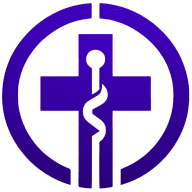In the digital age, the healthcare sector faces unique challenges. Among these, cybersecurity stands out as a critical concern. This blog post delves into the best practices for healthcare cybersecurity, providing a comprehensive guide for healthcare providers to safeguard their systems and patient data. We'll explore the importance of cybersecurity, common threats, and practical steps to enhance security measures.
Understanding the Importance of Cybersecurity in Healthcare
The healthcare sector, with its vast repositories of sensitive patient data, is a prime target for cybercriminals. A single breach can have devastating consequences, from financial losses to reputational damage and even potential harm to patients. Therefore, understanding the importance of cybersecurity in healthcare is the first step towards effective protection.
Healthcare providers handle a wide range of data, including personal identification information, medical histories, and payment details. This data is not only sensitive but also valuable on the black market, making healthcare organizations attractive targets for cybercriminals.
Moreover, the increasing use of technology in healthcare, such as electronic health records (EHRs) and telemedicine, has expanded the potential attack surface for cyber threats. The COVID-19 pandemic has further accelerated this trend, with many healthcare providers rapidly adopting digital solutions to continue providing care amidst lockdowns and social distancing measures.
Common Cybersecurity Threats in Healthcare
To effectively protect against cyber threats, healthcare providers must first understand the common types of attacks they may face. These include ransomware attacks, phishing scams, and data breaches.
Ransomware attacks involve malicious software that encrypts a victim's data, rendering it inaccessible until a ransom is paid. Healthcare providers are often targeted due to the critical nature of their work - a disruption in services could potentially lead to life-threatening situations, making them more likely to pay the ransom.
Phishing scams, on the other hand, involve tricking individuals into revealing sensitive information, such as login credentials or credit card details. These scams often involve deceptive emails that appear to come from legitimate sources.
Data breaches involve unauthorized access to a healthcare provider's data. This can occur through various means, such as exploiting vulnerabilities in a network or stealing login credentials.
Implementing a Robust Cybersecurity Framework
Implementing a robust cybersecurity framework is crucial for healthcare providers to protect against these threats. This involves several key components, including risk assessment, data encryption, regular updates and patches, and employee training.
Risk assessment involves identifying potential vulnerabilities in a healthcare provider's systems and processes. This includes assessing the security of physical devices, networks, and applications, as well as evaluating the effectiveness of existing security measures.
Data encryption involves converting data into a code to prevent unauthorized access. This is particularly important for sensitive patient data, which should be encrypted both in transit and at rest.
Regular updates and patches are crucial to protect against known vulnerabilities. Cybercriminals often exploit outdated software, so it's important to keep all systems up to date.
Employee training is also a key component of a robust cybersecurity framework. Many cyber attacks succeed due to human error, so it's important to educate staff about common threats and how to avoid them.
Embracing Advanced Cybersecurity Technologies
In addition to implementing a robust cybersecurity framework, healthcare providers should also consider embracing advanced cybersecurity technologies. These include artificial intelligence (AI), blockchain, and biometric authentication.
AI can help detect and respond to cyber threats more quickly and accurately. For example, machine learning algorithms can analyze patterns of network traffic to identify unusual activity that may indicate a cyber attack.
Blockchain can help secure patient data by creating a decentralized, tamper-proof record of transactions. This can make it more difficult for cybercriminals to alter or steal data.
Biometric authentication, such as fingerprint or facial recognition, can provide an additional layer of security by ensuring that only authorized individuals can access sensitive data.
Navigating Regulatory Compliance
Navigating regulatory compliance is another important aspect of healthcare cybersecurity. In many countries, healthcare providers are subject to strict regulations regarding the protection of patient data.
In the United States, for example, the Health Insurance Portability and Accountability Act (HIPAA) sets out stringent requirements for the protection of patient health information. Non-compliance can result in hefty fines and other penalties.
Therefore, healthcare providers should ensure that their cybersecurity measures are not only effective, but also compliant with relevant regulations. This may involve working with legal and compliance experts, as well as conducting regular audits to ensure ongoing compliance.
Building a Culture of Cybersecurity
Finally, building a culture of cybersecurity is crucial for long-term success. This involves fostering an environment where all staff understand the importance of cybersecurity and are committed to protecting patient data.
This can be achieved through regular training and awareness campaigns, as well as by integrating cybersecurity into the organization's core values and strategic objectives. It's also important to encourage open communication about cybersecurity issues, and to provide support for staff who identify potential threats or vulnerabilities.
Securing the Future of Healthcare
As the healthcare sector continues to embrace digital transformation, cybersecurity will remain a critical concern. By understanding the importance of cybersecurity, recognizing common threats, implementing a robust cybersecurity framework, embracing advanced technologies, navigating regulatory compliance, and building a culture of cybersecurity, healthcare providers can protect their systems and patient data against cyber threats. The journey towards robust healthcare cybersecurity may be complex, but it is undoubtedly a necessary one.

